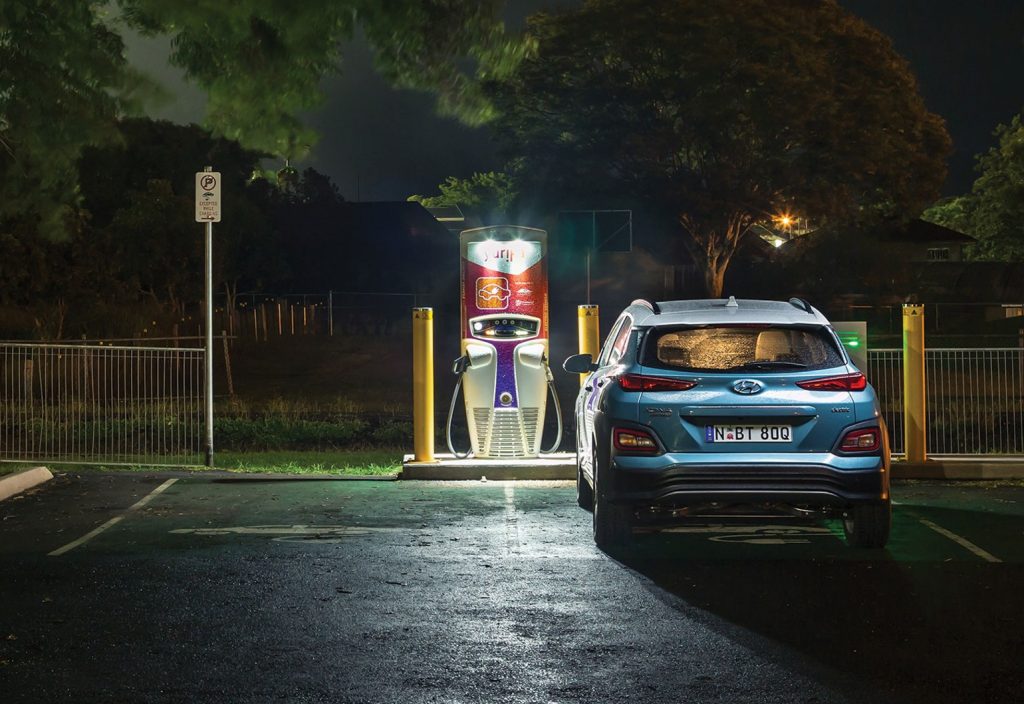Electric vehicle sales are on the rise globally. One of the world’s fastest growing EV charger companies capitalising on that rising interest in transport powered by renewable energy was founded right here in Australia.
Engineers Australia made addressing climate change one of its three priorities in advance of last weekend’s federal election, reflecting the growing appetite among engineers and the general public alike for action on climate change.
Investment in technologies reliant on renewable energy, such as electric vehicles, or EVs, is paramount to reaching net zero and doing better by the environment.
One company that has put the pedal to the metal to capitalise on EVs is the charger design and manufacturing company Tritium.
The Australian company’s transition from home-grown startup to New York Stock Exchange-listed multinational business provides a model for the future advancement of the EV industry.
An Aussie success story
The story of Tritium is one to make any lover of local manufacturing proud.
Founded by a trio of electrical engineers two decades ago, Tritium has expanded so significantly it has become one of the fastest growing EV charger companies in the world.
When create spoke with Tritium back in 2019, the Brisbane-based enterprise had around 300 staff and was primarily based out of suburban Murarrie, near the Gateway Bridge.
The company had just inked a deal to supply its new generation charging units to Europe’s Ionity charging network.
Now, a new factory in Tennessee with three times the capacity of their Brisbane factory will see the creation of 500 local jobs.
Dr David Finn, one of Tritium’s three founding electrical engineers and their current Chief Vision Officer, told create that its NYSE listing has enabled the company to inject more money into production and expand their facilities.
“Our capacity in Australia is about 5000 pieces per annum,” he said. “But that facility, on opening, will be able to produce 10,000 pieces per annum – and we’ll be able to expand it over time to 30,000 pieces. That gives you some idea of the scale that we’re dealing with at the moment.”
Shifting gears
With sales of electric vehicles in Australia tripling in 2021 to 20,665 from 6,900 in 2020 according to the Electric Vehicle Council, upscaled production will be essential to secure the future of the industry.
Luckily, Tritium’s forward momentum does not look like slowing down soon.
“I’ve been working with the engineers very closely over the last few years to have a product offering that runs all the way from 30 kilowatts all the way to megawatt-scale charging infrastructure, and build those products with a common architecture,” Finn said.
EV sales have skyrocketed overseas, and although the Australian market hasn’t yet reached the same heights, Finn believes the tipping point is not far away.
“We’re going to benefit off the back of what’s happening overseas, where there’s been some real movement in the marketplace,” he said.
This uptick would likely be necessary to put Australia on track to reach the recommended target of 100,000 public chargers by 2027 needed to support uptake of EVs consistent with net zero by 2050.
In the meantime, Tritium is making the most of their hard-earned success.
“Tritium’s ability to win in this marketplace is due to the fact that we’ve managed to get in at the right time and ride the wave globally,” Finn said. “We’re one of the few players that works across multiple continents.
“It’s going to get fascinating when there are more vehicles on the road. Then you can start to do some really interesting networking stuff – think of bidirectional capability, or colocation of charging hubs with energy storage.”
His advice for other local industry players? Put the figurative key in the ignition and get moving.
“If Australia gets moving, there will be a lot of interesting business opportunities,” he said. “But if we start to lag behind, other countries will have an advantage over us.”
